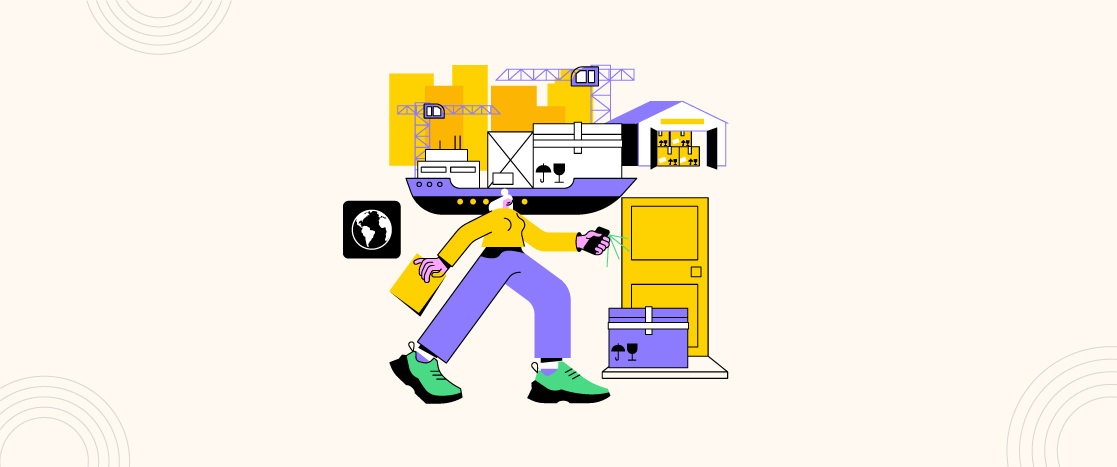
Step-by-Step Guide to Building an Ecommerce Online Store
- Planning Your Ecommerce Store
- Pick An Ideal Web Hosting for Your Ecommerce Store
- Selecting the Best CMS for the Success of Your E-Commerce Website
- Choosing the Best Theme
- Customize Your Website: Simple Ways to Add Unique Style
- Make Appealing Product Listings: Simply Add and Display Your Items
- Set Up Payment Gateways, Inventory Management, and Tax Adjustments
- Customize Your Website: Examine and Launch Like a Pro
- Why Launching Your Website Online Is a Good Idea
- The Key Drivers of Ecommerce Growth
- Final Thoughts
- FAQS
Building an ecommerce website is an exciting and crucial step in launching your business online. The global ecommerce market is expected to surpass $9.3 trillion by 2027, with a compound annual growth rate of 9% from 2022, according to economic intelligence provider GlobalData. This significant growth highlights the increasing shift from traditional retail to online shopping, offering immense opportunities for new ecommerce businesses to thrive.
It’s critical to comprehend the benefits of opening an e-commerce store before delving into the technological details. The explosive expansion of the e-commerce market and the growing popularity of mobile commerce have created a favorable atmosphere for online enterprises. By running an online business, you can reach a worldwide audience, cut expenses, and provide individualized shopping experiences that satisfy the tastes of contemporary consumers.
We can answer your questions on how to launch an e-commerce website. If your business is already running, you can begin the simple procedure in a few hours. The key steps to creating a successful, user-friendly e-commerce website that will position your company for success will be outlined in this article.
- Planning Your Ecommerce Store
- Pick An Ideal Web Hosting for Your Ecommerce Store
- Selecting the Best CMS for the Success of Your E-Commerce Website
- Choosing the Best Theme
- Customize Your Website: Simple Ways to Add Unique Style
- Make Appealing Product Listings: Simply Add and Display Your Items
- Set Up Payment Gateways, Inventory Management, and Tax Adjustments
- Customize Your Website: Examine and Launch Like a Pro
- Why Launching Your Website Online Is a Good Idea
- The Key Drivers of Ecommerce Growth
- Final Thoughts
- FAQS
Planning Your Ecommerce Store
Countless ecommerce websites fail because they aren’t planned properly. Insufficient planning can lead to technical shortcomings. You might have a winning product, but it’s of no use on a slow website. Without a solid business strategy, haphazardly created sites may suffer from poor user experience, inadequate content, and ineffective marketing efforts.

Identifying Your Niche
- Market Research: Start by researching the market demand for your products. Analyze your competitors to understand what they offer and how you can differentiate your store.
- Target Audience: Define your target audience by understanding their needs, preferences, and shopping behaviors. This will help you tailor your store to attract and retain customers.
Setting Clear Goals
- Sales Targets: Set realistic sales targets for your ecommerce store. Consider factors like market trends, competition, and your marketing strategies.
- Technical Targets: Measure your webpage loading times on peak and off-peak periods. Keep optimizing to make your store faster and stabler for your visitors.
- Brand Positioning: Determine how you want your brand to be perceived in the market. Your brand positioning will guide your store’s design, product offerings, and marketing efforts.
Pick An Ideal Web Hosting for Your Ecommerce Store
Top hosting companies provide strong security, consistent uptime, dependable performance, and first-rate customer service. For optimal performance, you should sign up with a managed cloud hosting service. With managed cloud hosting, your website will never suffer with hosting performance issues. Most cloud platforms have nearly perfect (close to 100%) infrastructural uptime. This means your website will always be available for your visitors and customers.
Devrims Managed Cloud Hosting Platform is designed to meet the performance expectations of all types of ecommerce websites. The platform guarantees the smooth and safe operation of your website by providing one-click ecommerce shop builders–aka ‘Content Management Systems (CMS), optimized PHP stacks, super-fast page loading times, one-click cloud expansion (vertical scaling), free staging URLs and Let’s Encrypt SSL certificates, and round-the-clock customer assistance.
Selecting the Best CMS for the Success of Your E-Commerce Website
Choosing the appropriate content management system (CMS) for your e-commerce website is essential. Every CMS has unique benefits that meet various company requirements.
Magento: Magento, an open-source platform, is ideal for any ecommerce website, whether you’re a small business or a large organization with complex needs. Renowned for its scalability and extensive customization options, Magento can efficiently manage a vast number of products and handle high traffic volumes. Additionally, it offers a robust feature set right out of the box and does not charge any commissions on sales, making it a cost-effective solution for businesses looking to grow and scale online.
WooCommerce: For individuals who are already familiar with WordPress, WooCommerce is an ideal ecommerce builder. Because of its remarkable flexibility and ease of use, it’s a great option for businesses of all sizes. It advantage of the vast WordPress plugin ecosystem as well.
OpenCart: This content management system is ideal for small to medium-sized organizations and has an easy-to-use interface. It has several extensions to increase functionality and is simple to set up.
Custom-Built PHP/Laravel Shops: Using PHP or Laravel to create a custom shop is an alternative to businesses with particular needs that standard solutions are unable to provide. The greatest flexibility is offered by this path, but it requires the creation and maintenance of the website by a qualified developer.
Explore our extensive article on WooCommerce vs. Magento for a deeper look at the comparison of e-commerce systems.
Choosing the Best Theme
The theme you select improves user experience and creates the visual style of your website. There are many free and premium themes available for both WooCommerce and Magento.
WooCommerce Themes: Because of their flexibility and simplicity of use, well-known themes like Storefront and Astra come highly recommended. These themes offer a multitude of customization possibilities to personalize the appearance and feel of your website, all while being performance-optimized.
Magento Themes: Ultimo and Porto are two great options for Magento themes. These themes are renowned for their extensive customization options and innovative features. Their sturdy performance and ability to manage big catalogs are designed into them.

Picking Between Paid and Free Themes
You have options when selecting a theme, both paid and free. Free themes are an excellent place to start, particularly if money is restricted. When customized, they can be highly effective and offer basic functionality.
Paid themes, however, come with more sophisticated features, distinctive looks, and attentive support. Usually costing between $30 and over $200, high-end themes can give your website a more polished look while saving you time when it comes to customizing. By making your site more aesthetically pleasing and functional, a premium theme can improve user experience and even boost sales.
Customize Your Website: Simple Ways to Add Unique Style
The next stage is to customize your website to your brand’s identity after choosing a theme. This includes creating important pages like your homepage, product pages, and policy pages, as well as upgrading the header and footer and setting up navigation.
With the customization options most CMS platforms offer, you can change layouts, colors, and fonts without knowing a lot of code. Ensuring a consistent and user-friendly website design is crucial for a smooth user experience. In addition to having a polished appearance, a well-customized website facilitates clients’ search for what they’re searching for, increasing user happiness and conversion rates.
Make Appealing Product Listings: Simply Add and Display Your Items
Your online store’s product listings are the primary component. Sort your products into main categories and smaller ones, making sure that each listing has clear pricing, thorough descriptions, and excellent photos. Customer reviews and ratings are an important component of effective product listings since they create trust and motivate purchases.
Comprehensive product management systems are offered by WooCommerce and Magento, which make it simple to add, change, and manage your stock. Make sure that the photos are high-resolution and that the product descriptions are accurate. This focus on detail contributes to a better shopping experience, which raises consumer happiness and boosts revenue.
Set Up Payment Gateways, Inventory Management, and Tax Adjustments
To process transactions, a reliable and secure payment gateway must be set up. Because they are dependable and simple to integrate, solutions like PayPal and Stripe are popular. To protect consumer data, make sure the payment gateway you have selected complies with PCI standards.
Order fulfillment can be streamlined and stock levels can be monitored with the aid of inventory management software. Many operations can be automated by integrating these technologies with your CMS, which will save you time and cut down on errors. Furthermore, think about including a tax calculator to compute sales tax instantly at the register, ensuring compliance and enhancing the customer experience.
Customize Your Website: Examine and Launch Like a Pro
You should test your ecommerce site thoroughly before launching it. Verify that all buttons and links function properly. You should also test the checkout process to make sure it runs smoothly and without errors. Verify that order confirmations and other notifications are received via email successfully.
To guarantee a consistent user experience, test your website’s functionality across a range of hardware and browser combinations. It’s time to launch once you’re sure everything is working as it should. To draw in your initial clients, use email marketing, social media, and other platforms to announce the debut of your website.
These guidelines will help you build a business-focused, high-performing e-commerce website that will satisfy your clients’ expectations and give them an easy and seamless online purchasing experience. Your internet store has the potential to be a profitable and successful business with the correct preparation and implementation.
Why Launching Your Website Online Is a Good Idea
Before starting to develop an e-commerce website, you should be aware of the benefits of selling products online. The following are some strong reasons for thinking about moving your company online:
Online Buying Will Increase
Online shopping has grown significantly in popularity and is now more than an occasional trend. 2020 saw a 40% increase in e-commerce sales during the pandemic. People will continue to purchase online even after the pandemic is over since smartphones make it simple and convenient to shop anytime, anyplace.

Creating an Online Store Saves Money
Launching an e-commerce website is far less expensive than launching a physical business. High fixed costs associated with brick-and-mortar establishments include rent, utilities, staff salaries, and maintenance. Many of these costs can be reduced with an online store.
Online and Offline Teamwork Is Possible
Your physical store does not need to be replaced by your online one. They could be useful to one another. Your physical store can be promoted via your e-commerce website, and vice versa. For instance, after experiencing immense growth on the internet, Amazon is growing into physical stores.
Make Customized Connections
You may customize products and services for each customer when you sell online. You may build a purchasing experience that customers will enjoy and speak about by using pictures, stories, customer reviews, and personalized messaging.
Begin Selling Immediately
You can start selling as soon as your website is prepared. There’s no waiting for new hires, merchandise to be stocked, or hype generated by marketing. As soon as your website launches, you can start operating it.
Reduce the Cost of Inventory with Dropshipping
Shop typically contains inventory management and storage. Dropshipping eliminates the need for you to manage inventory. You can eliminate the requirement for warehousing and save money by selling goods straight to consumers from suppliers.
The Key Drivers of Ecommerce Growth
As we move into 2025, the ecommerce landscape continues to expand at an unprecedented pace. Several key factors are driving this growth, making it an opportune time for businesses to establish or enhance their online presence.
Rapid Growth of the Ecommerce Market
The global ecommerce market is experiencing rapid expansion, fueled by the increasing shift from traditional retail to online shopping. This growth is expected to continue as consumers increasingly prioritize convenience and accessibility. The ecommerce market’s projected value of over $9.3 trillion by 2027 highlights the vast potential for businesses to tap into this lucrative industry.
Mobile Commerce Expansion
Mobile commerce, or m-commerce, is a significant contributor to the growth of ecommerce. E-commerce is projected to account for $2.52 trillion in sales, with nearly 60% of global ecommerce revenue coming from mobile devices (Statista). This trend underscores the importance of optimizing online stores for mobile users. Businesses that cater to this preference by providing seamless mobile shopping experiences are better positioned to capture a larger market share.
Lower Costs and Higher Margins
Operating an ecommerce store often involves lower overhead costs compared to traditional brick-and-mortar stores. Without the need for physical retail space, businesses can allocate resources more efficiently, resulting in higher profit margins. The ability to reach a global audience further enhances the potential for profitability, as businesses are no longer constrained by geographical limitations.
Technological Advancements and Personalization
The rise of artificial intelligence, voice search, and personalized shopping experiences is transforming the ecommerce landscape. Consumers now expect tailored experiences based on their preferences. Businesses that leverage these technologies can differentiate themselves and build stronger customer relationships, ultimately driving growth.
Global Reach
Ecommerce enables businesses to easily access international markets. With over half of online shoppers purchasing products from international websites, the potential to expand a customer base globally is immense. This is especially beneficial for niche products, which may have limited local demand but are highly sought after in other regions.
Final Thoughts
In summary, starting an ecommerce store in 2025 is not only a response to the growing market demand but also a strategic move to capitalize on technological advancements and changing consumer behaviors. The ability to operate with lower costs, reach a global audience, and provide personalized, convenient shopping experiences makes ecommerce a lucrative venture for the foreseeable future.
FAQS
Is ecommerce profitable?
Yes, e-commerce can be profitable. This means that a company that sells products and services online can make a lot of money from digital transactions as long as it manages its operations well. This includes customer acquisition, sales volume, and effective inventory management. In other words, e-commerce is the ability to make more money from online sales than the expenses incurred in operating the business.
What are the four basics of ecommerce?
The four fundamental forms of e-commerce are business-to-business (B2B), business-to-consumer (B2C), consumer-to-consumer (C2C), and consumer-to-business (C2B).





